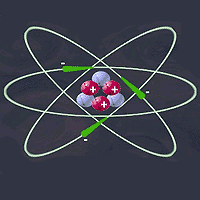Solar Micro Car Kit DIY STEM Kit
$9.99$4.95
Posted on: Jun 17, 2004

Researchers at the University of Innsbruck in Austria, in collaboration with a scientist at Los Alamos National Laboratory, announced today the first demonstration of the teleportation of a quantum state from one trapped atom to another located 8 microns -- slightly less than a thousandth of an inch -- away. This is the first time quantum teleportation has been achieved with actual particles (as opposed to beams of light), and the first time it has been demonstrated in an entirely deliberate and controllable manner.
According to quantum information physicist Daniel F. James, the Los Alamos investigator on the project, "the significance of these results is that they represent an important step forward toward making quantum information processing a reality. Such a technology would exploit the fundamental properties of quantum mechanical systems -- the very properties that make them different from the classical physics phenomena encountered in everyday life -- in order to compute or communicate far more efficiently than is currently possible even with the most advanced super-computers."
In the experiment described in today's issue of the scientific journal Nature, the group achieved teleportation using singly-ionized calcium atoms that were confined and cooled to ultra-low temperatures (around 15 millionths of a degree above absolute zero). Using lasers, the internal configurations of the atoms -- their quantum states -- were controlled very precisely, allowing entanglement between two of the atoms to be created. One of these entangled atoms was then further entangled with a third atom -- the input of the teleporter. By performing a simple measurement on this pair, and another series of interactions dependent on the outcome of the measurement, the original input state was then re-created on the remaining (output) atom. The quantum state teleportation experiments were carried out at the University of Innsbruck's Institute for Experimental Physics.
The key to quantum state teleportation is a peculiar quantum-mechanical link that can be created between two or more particles called entanglement. First studied theoretically by Albert Einstein, together with Boris Podolsky and Nathan Rosen, in 1935, entanglement is believed to form the critical ingredient of the futuristic quantum computer, a revolutionary new technology currently under intense development worldwide. In 1993, an international group of scientists, including IBM's Charles Bennett, proposed a scheme to employ entanglement to teleport the quantum state of one particle to another. At first a theoretical curiosity, within a few years preliminary experiments had demonstrated various aspects of this teleportation protocol. However, the protocol required the development of small-scale prototype quantum computers to perform the operation in its entirety. This prototype development has now been accomplished and related results are also being reported by the National Institute of Standards and Technology in Boulder, Colo.
In addition to James, other investigators on the project include Mark Riebe, Hartmut Häffner, Christian Roos, Wolfgang Hänsel, Jan Benhelm, Gavin Lancaster, Timo Körber, Christoph Becher, Ferdinand Schmidt-Kaler and Rainer Blatt. The research was funded by the Austrian Science Fund, the European Commission (QUEST, QUBITS and QGATES networks), the Institut für Quanteninformation and the Los Alamos Laboratory-Directed Research and Development (LDRD) program.
 'A scientist is happy, not in resting on his attainments but in the steady acquisition of fresh knowledge.'
'A scientist is happy, not in resting on his attainments but in the steady acquisition of fresh knowledge.'